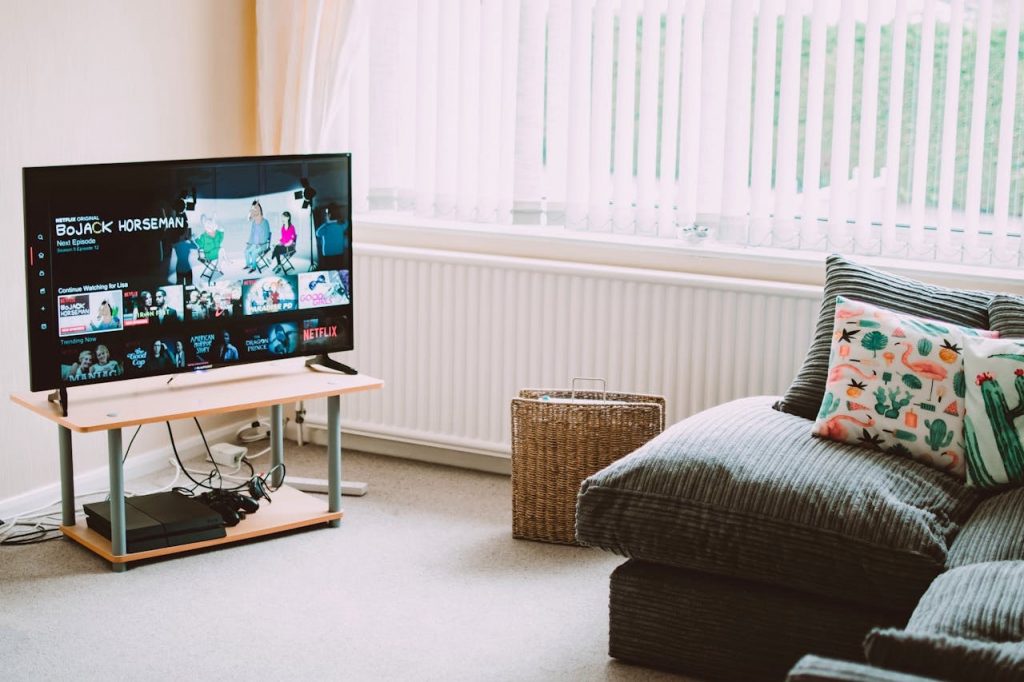Why Do I Get a Headache After Watching TV for a Few Hours?

Headaches after watching TV for extended periods are a common issue that many people experience. Whether you’re binge-watching your favorite show or catching up on the latest news, spending long hours in front of a screen can sometimes lead to discomfort. But why does this happen? This article explores the various factors that contribute to headaches after watching TV, what symptoms you might experience, and how you can prevent or manage these headaches.
Understanding Eye Strain: Digital Eye Strain or Computer Vision Syndrome
How It Happens
One of the primary causes of headaches after watching TV for a long time is eye strain, also known as digital eye strain or computer vision syndrome. When you stare at a screen for extended periods, your eyes work harder to focus, which can lead to discomfort and headaches. The muscles around your eyes are constantly adjusting as you focus on the screen, particularly if you’re watching in low light or if the screen’s brightness is not properly adjusted. This strain on your eye muscles can lead to a tension headache, typically felt around the forehead, temples, or behind the eyes.
Associated Symptoms
Along with headaches, eye strain can cause symptoms like dry eyes, blurred vision, double vision, and sensitivity to light. You might also notice that your eyes feel tired or sore after a long TV session, which can exacerbate head pain.
What to Do
To reduce eye strain, follow the 20-20-20 rule: every 20 minutes, take a 20-second break and look at something 20 feet away. Adjusting the brightness and contrast of your TV screen, maintaining a comfortable viewing distance, and ensuring that the room is well-lit can also help alleviate eye strain. Consider investing in anti-glare screens or positioning your TV to minimize reflections and glare from windows or lamps.
The Impact of Blue Light Exposure
How It Happens
TV screens emit blue light, which can disrupt your natural sleep-wake cycle and contribute to headaches. Prolonged exposure to blue light can affect the way your brain processes visual information, leading to eye strain and headaches. Blue light exposure can interfere with melatonin production, which not only affects sleep but can also lead to overstimulation of the brain. This overstimulation can cause fatigue and trigger headaches, especially if you’re watching TV late at night.
Associated Symptoms
In addition to headaches, blue light exposure can lead to eye discomfort, difficulty falling asleep, and feeling fatigued even after watching TV for a short period. Some people may experience increased sensitivity to light or find it harder to concentrate after prolonged exposure.
What to Do
Consider using blue light filters or glasses designed to block blue light. Reducing screen time before bed and adjusting the color settings on your TV to warmer tones can also help minimize the impact of blue light. Many TVs now come with a “night mode” or “blue light reduction” setting that can be useful in the evenings.
Poor Posture and Muscle Tension
How It Happens
Your posture while watching TV can play a significant role in whether you experience headaches afterward. Slouching, sitting in awkward positions, or craning your neck can lead to muscle tension that triggers headaches. When you sit with poor posture, particularly for long periods, you put extra strain on your neck, shoulders, and upper back muscles. This tension can lead to tension headaches, which are typically felt as a band-like pressure around the head or tightness in the neck and shoulders.
Associated Symptoms
Poor posture can also cause muscle stiffness, soreness, and discomfort that can radiate to the head, leading to persistent headaches. You might find that your headaches are accompanied by a general feeling of tightness or heaviness in your upper body.
What to Do
To prevent posture-related headaches, ensure that your seating is comfortable and supports your back. Keep your TV at eye level to avoid straining your neck, and take breaks to stretch or adjust your position every 30 minutes. Consider using ergonomic furniture or accessories that promote better posture, such as lumbar support cushions or adjustable chairs.
Bright or Flickering Screens
How It Happens
Bright screens or flickering lights from the TV can be a trigger for headaches, especially for people who are sensitive to visual stimuli. Certain scenes with rapid changes in brightness or flashing images can overstimulate the brain, leading to headaches. When your eyes are exposed to flickering or rapidly changing light levels, they must work harder to process the information. This can overwhelm the visual cortex in the brain, leading to headaches, particularly in individuals prone to migraines or light sensitivity.
Associated Symptoms
Sensitivity to light, visual disturbances like seeing spots or halos, and worsening of headache symptoms in brightly lit environments are common. You may also experience a sense of visual fatigue, where your eyes feel tired or strained.
What to Do
You can reduce the impact of bright or flickering screens by lowering the brightness settings on your TV and avoiding watching in a completely dark room. If you’re prone to light sensitivity, consider dimming the lights or using ambient lighting while watching TV. Some TVs offer settings to reduce flicker or adjust refresh rates, which can be particularly helpful.
The Role of Dehydration
How It Happens
Spending hours in front of the TV without drinking enough water can lead to dehydration, which is a common cause of headaches. Many people don’t realize that they’re dehydrated while engrossed in a show or movie, leading to headaches that worsen over time. Dehydration causes your brain to temporarily shrink from fluid loss, which can trigger pain receptors and result in a headache. Additionally, dehydration can lead to fatigue and difficulty concentrating, further contributing to headache symptoms.
Associated Symptoms
Dry mouth, dizziness, fatigue, and a general sense of lethargy often accompany dehydration headaches. You might also notice a decrease in overall energy levels or find it harder to focus on the TV.
What to Do
Make sure to stay hydrated while watching TV by keeping a glass of water nearby. Regularly sipping water throughout your viewing session can prevent dehydration and reduce the likelihood of headaches. Herbal teas or electrolyte-infused drinks can also be good options if you’re looking for variety.
Stress and Overstimulation
How It Happens
Watching intense, suspenseful, or emotionally charged content can sometimes lead to stress-induced headaches. The combination of screen time, emotional engagement, and mental stimulation can cause headaches, especially if you’re already stressed or tired. When you’re deeply engaged in a show that evokes strong emotions—whether excitement, fear, or anxiety—your body releases stress hormones like cortisol. These hormones can lead to muscle tension, increased heart rate, and, eventually, headaches.
Associated Symptoms
You might also experience tension in your neck and shoulders, difficulty focusing, and feelings of anxiety or overstimulation. Some people may notice an increase in heart palpitations or a sense of restlessness.
What to Do
If you’re prone to stress-related headaches, try to take breaks between episodes or limit how much you watch in one sitting. Practicing relaxation techniques like deep breathing or stretching can help ease tension and prevent headaches. Mindfulness or meditation apps can also be useful tools to manage stress levels before or after watching TV.
Exploring Additional Factors
Environmental Factors
Sometimes, the environment in which you watch TV can contribute to headaches. Poor air quality, such as a stuffy or smoke-filled room, can exacerbate headache symptoms. Additionally, allergens like dust or pet dander might trigger headaches for those with sensitivities.
What to Do: Ensure proper ventilation in your viewing area and consider using an air purifier to maintain a clean and allergen-free environment. Regular cleaning to reduce dust and maintaining a comfortable room temperature can also help.
Diet and Nutrition
What you eat and drink while watching TV can play a role in headache occurrence. Consuming high-sugar snacks or caffeinated beverages can lead to blood sugar spikes and crashes, contributing to headaches.
What to Do: Opt for healthy snacks like nuts, fruits, or whole-grain options that provide sustained energy. Staying consistent with meal times and avoiding excessive caffeine or alcohol can also help prevent headaches.
Preventive Measures and Lifestyle Changes
Establishing a Routine
Creating a routine that balances TV time with other activities can help reduce headache frequency. Setting specific times for watching TV and ensuring regular breaks can prevent prolonged exposure.
What to Do: Try incorporating activities like reading, exercising, or socializing into your daily routine to break up screen time. Setting alarms or reminders to take breaks can be helpful.
Eye Exercises
Performing simple eye exercises can relieve strain and improve eye health, potentially reducing headache symptoms.
What to Do: Consider exercises like eye rolling, focusing on near and far objects, and blinking frequently to keep your eyes lubricated. These exercises can be done during breaks from watching TV.
When to Seek Professional Help
While many headaches from watching TV can be managed with lifestyle changes and preventive measures, persistent or severe headaches may require medical attention. If you experience frequent headaches that don’t improve with self-care, it might be time to consult a healthcare provider.
Signs to Watch For
- Persistent headaches despite lifestyle changes
- Headaches accompanied by other concerning symptoms like vision changes, nausea, or dizziness
- Severe headaches that interfere with daily life
What to Do: Seeking advice from an eye specialist or a neurologist can provide insights into underlying issues. They may recommend further testing or specific treatments based on your symptoms.
By understanding the causes and taking proactive steps—such as adjusting your screen settings, staying hydrated, and maintaining good posture—you can reduce the frequency and severity of these headaches. Remember, balance is key; enjoying your favorite shows while taking care of your health is entirely possible with a few mindful adjustments.


